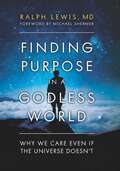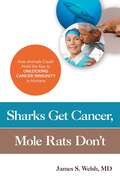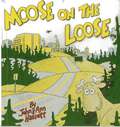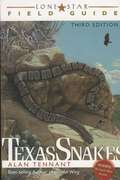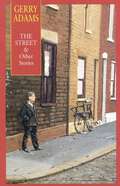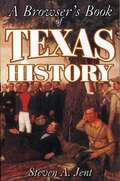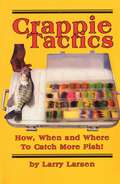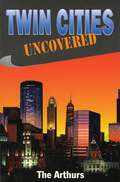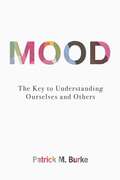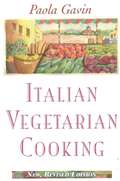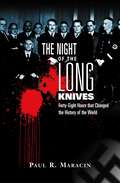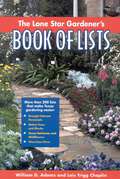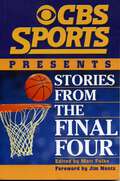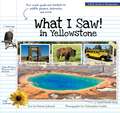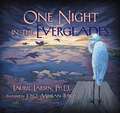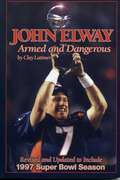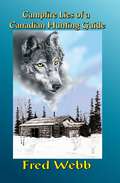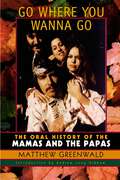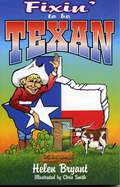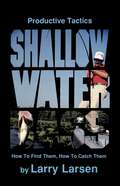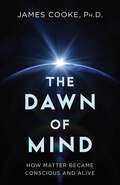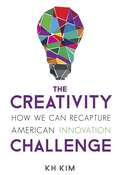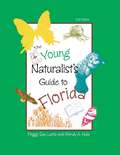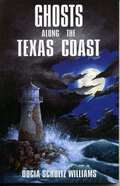- Table View
- List View
Finding Purpose in a Godless World: Why We Care Even If the Universe Doesn't
by Ralph LewisA psychiatrist presents a compelling argument for how human purpose and caring emerged in a spontaneous and unguided universe. Can there be purpose without God? This book is about how human purpose and caring, like consciousness and absolutely everything else in existence, could plausibly have emerged and evolved unguided, bottom-up, in a spontaneous universe. A random world--which according to all the scientific evidence and despite our intuitions is the actual world we live in--is too often misconstrued as nihilistic, demotivating, or devoid of morality and meaning. Drawing on years of wide-ranging, intensive clinical experience as a psychiatrist, and his own family experience with cancer, Dr. Lewis helps readers understand how people cope with random adversity without relying on supernatural belief. In fact, as he explains, although coming to terms with randomness is often frightening, it can be liberating and empowering too. Written for those who desire a scientifically sound yet humanistic view of the world, Lewis's book examines science's inroads into the big questions that occupy religion and philosophy. He shows how our sense of purpose and meaning is entangled with mistaken intuitions that events in our lives happen for some intended cosmic reason and that the universe itself has inherent purpose. Dispelling this illusion, and integrating the findings of numerous scientific fields, he shows how not only the universe, life, and consciousness but also purpose, morality, and meaning could, in fact, have emerged and evolved spontaneously and unguided. There is persuasive evidence that these qualities evolved naturally and without mystery, biologically and culturally, in humans as conscious, goal-directed social animals. While acknowledging the social and psychological value of progressive forms of religion, the author respectfully critiques even the most sophisticated theistic arguments for a purposeful universe. Instead, he offers an evidence-based, realistic yet optimistic and empathetic perspective. This book will help people to see the scientific worldview of an unguided, spontaneous universe as awe-inspiring and foundational to building a more compassionate society.
Sharks Get Cancer, Mole Rats Don't: How Animals Could Hold the Key to Unlocking Cancer Immunity in Humans
by James S. Welsh, MDThis fresh and fascinating exploration of new directions in cancer research focuses on the important role of the immune system in combatting this dread disease. Integrating clues from the animal kingdom, the veterinary clinic, extraordinary human cases, and even embryology, the author-a cancer physician, biologist, and physicist-creates a novel and compelling account of tumor immunology and the promises of immunotherapy. As the author explains, animals offer us many tantalizing clues about the nature of cancer in humans. Tasmanian devils are on the verge of extinction due to a virulent form of contagious cancer; soft-shelled clams on the East coast of North America are vanishing due to another epidemic of contagious cancer; dogs also contract a contagious cancer but they spontaneously overcome it; and a type of mouse and the homely mole rat are not susceptible to the disease at all. In humans, there are rare instances of spontaneous cures of advanced cancers induced by radiation. An uncommon form of dwarfism called Laron syndrome confers total cancer immunity on the people who inherit the condition. And recent research suggests that cancer has stolen the secret that shields the embryo against hostile attacks from the mother's immune system. The author makes a convincing case that what all of these diverse examples have in common is the immune system and its ability or inability to respond to malignancies. He concludes with a review of the exciting research on the human immune system and the development of new treatments that are inducing the immune system to combat and conquer even the deadliest cancers.
Moose on the Loose
by John Hassett Ann HassettIn Moose on the Loose by Ann and John Hassett, follow the adventures of Max the moose. Max is a curious moose - so curious that he travels to a nearby city to see how humans live. His adventures culminate in an exciting helicopter rescue and convinces him that curiosity is almost as bad for moose as it is for cats!
Lone Star Field Guide to Texas Snakes
by Alan TennantThe State of Texas not only boasts the largest snakes in North America, but also the largest number of species—105. This guide describes in detail each and every one of them, from the benign Texas long-nosed snake, to the venomous Western Cottonmouth. Facts on the biology and behavior are given, plus the latest findings on abundance, reproduction, prey, sizes, and habitat. In addition, introductory chapters describe the physiology and diet of snakes, and an all-important section on "Venom and Evenomation" debunks the many myths surrounding what to do when bit by a venomous snake. 128 color plates of species and subspecies aid in identification.
The Street & Other Stories
by Gerry AdamsOne of the world's best-known political figures shares stories that reveal the humanity and indomitable spirit of ordinary people caught up in extraordinary events. The moving accounts of the fictional characters in these eighteen short stories are set against the political turmoil of Gerry Adams' native Belfast.
Browser's Book of Texas History
by Steven JentIf you love history and want to amaze your family and colleagues with your prodigious knowledge of Lone Star lore, this book is just what you need.A Browser's Book of Texas History is a day-by-day collection of more than 500 incident-some famous, some obscure-that have made Texas the most remarkable state in the Union. Even if you're a dedicated historian or an old-time Texan, you're likely to find something surprising, amusing, thought provoking, or just plain odd.With this book you can start every day of the year with a concise entry from the chronicles of this unique state, which just seems to naturally breed colorful people and bigger-than-life events.
Crappie Tactics
by Larry LarsenThis book contains detailed information on how, when and where to catch more crappie year round. Divided into three comprehensive sections, Larsen discusses the basics for fun, places for action, and advanced tactics.
Twin Cities Uncovered
by The ArthursTwin Cities Uncovered takes you from restored barns to fragrant apple orchards to the "Mighty Mississippi Bicycle Adventure" that runs from Minneapolis to cities far across America. Ride the antique, hand-carved carousel at the Minnesota State Fair, or stroll the "Mississippi Mile" along the cobblestone Main Street to a row of quaint shops, charming restaurants, and coffee houses on the water's edge. Recall the romance of Longfellow's "Hiawatha" by the showers of Minnehaha Falls, or step back in time and share the lifestyle of immigrant settlers at a living museum.
Mood: The Key to Understanding Ourselves and Others
by Patrick M. BurkeA reader-friendly yet in-depth overview of the latest research on mood as the way we are tuned to the world. This book examines the central role that mood plays in determining our outlook on life and our ability to cope with its challenges. The central theme is that mood determines how we are tuned to the world. Tuning emerges over the course of our earliest development as environmental and genetic influences form the neural circuits and set how they function across the lifespan in daily life and under conditions of stress. How each person is tuned becomes the basis for resilience or vulnerability to events. Some will take events in stride; others may become angry, anxious, or sad. A child psychiatrist with decades of clinical experience treating patients, the author stresses that relationships play a central role in shaping our mood. Security or insecurity, loss or the fear of loss of key relationships, especially in childhood, can have telling effects on the way we view the world. A chapter is devoted to each of the disorders where mood is a central issue: depression, anxiety, bipolar disorder, and antisocial disruptive disorders. The author then discusses the various "talking therapies" and the main classes of medication often administered to treat emotional disturbances. Burke concludes by summarizing the latest research on preventing mood disorders and discussing the impact that illness can have on emotional well-being and the role of mood in resilience and recovery.
Italian Vegetarian Cooking, New, Revised
by Paola GavinEasy-to-follow directions and an introduction explaining the cuisines makes this an enlightening as well as a delicious read. DSBooklist
Night of the Long Knives: Forty-Eight Hours That Changed The History Of The World
by Paul MaracinMany wonder how Adolf Hitler, a mediocre army corporal and failed landscape painter, could have become the architect of the most calamitous events of the twentieth century. But fewer know that Hitler's fateful transition from ambitious demagogue to Europe's most vicious tyrant occurred on an ordinary Saturday--June 30, 1934--in a little-known event that would come to be called "The Night of the Long Knives." This is the story of the events leading up to that awful event, and its most horrifying repercussions.
The Lone Star Gardener's Book of Lists
by William D. Adams Lois Trigg ChaplinWith more than 200 lists of plants and garden resources, this guide has the answers on what to plant where and on how to handle the toughest of Texas conditions. William D. Adams and Lois Trigg Chaplin offer numerous recommendations, noting the best growing zones and bringing together helpful hints and information from dozens of gardeners, nurseries, and horticultural professionals across the state.
CBS Sports Presents Stories From the Final Four
by Matt FulksJournalists who have covered the NCAA Tournament known as March Madness over the past 25 years share their experiences and opinions in this collection of short stories.
What I Saw in Yellowstone: A Kid's Guide to the National Park
by Durrae JohanekWhat I Saw in Yellowstone makes it fun for young people to find and identify the park&’s most frequently seen plants, animals, geothermal features, and more, whether they are driving park roads, resting at pull-offs, or hiking. The book is packed with color photos, lively descriptions, fun &“guess what&” factoids, and precise &“where-to-see-it&” directions. Readers can &“check off&” what they saw and write notes about when, where, and how they saw it, turning the book into a great journal of their Yellowstone trip to share with friends and classmates back home.
One Night in the Everglades
by Laurel LarsenFollow two scientists as they spend a night in the Everglades collecting water samples, photographing wildlife, and sloshing through marshes in an attempt to understand this mysterious ecosystem. Part of a long-term effort to return the Everglades to a natural state after a century of development, the scientists try to figure out what the &“river of grass&” was like prior to human settlement. Along the way, they deal with razor-sharp sawgrass and alligators and turtles and are even surprised by the sudden presence of what is known in the Everglades as a &“frog gigger&”—one who hunts and collects frogs for food!Published in cooperation with the Long Term Ecological Research Network, which is funded by the National Science Foundation.
John Elway: Revised and Updated to Include 1997 Super Bowl Season
by Clay LatimerThis is the first book on one of sport's greatest stars, a portrait of a man who has dedicated his life to becoming the greatest quarterback ever. It's the story of John Wayne in Cleats, a father of four who led his team to Super Bowl glory at age 37.
Campfire Lies Canada Guide
by Fred WebbThis is the sequel to Home from the Hill, a bestseller if there ever was one! Fred Webb once commented on his marriage by saying, "Irene and I had the typical teenage marriage that wasn't supposed to last six months. I guess the secret is that out of the past forty years I have been away about thirty-five of them." And away from home he has been, first as a radio operator in the remote North, then as a lumberjack, and later yet as a sailor. Eventually he became a full-time guide traveling all over the Arctic, guiding for the great game of the North—caribou, moose, polar bear, muskox, and grizzly. In these pages you will find the same irresistible attraction you did in Fred&’s earlier writings, for he truly is a masterful storyteller. Let Fred royally entertain you with his wild hunting tales and his adventurous vagabond existence; we guarantee this to be one book you&’ll have a hard time putting down. Fred, a master storyteller whose stories have been praised time and time again in the press, rates as one of the best sporting writers alive today.
Go Where You Wanna Go: The Oral History of The Mamas and The Papas
by Matthew GreenwaldLavishly illustrated and cinematic in scope, Go Where You Wanna Go is told from the points of view of not only the group members, but also from those of their friends, musical collegues, business associates, critics, and fans.
Fixin' To Be Texan
by Helen BryantYou don't just move here and immediately become a Texan; it takes training. This delightfully witty book takes you through the process of understanding our conversation, why and how we dress the way we do, why pickups are a fact of life, and how you can acquire the necessary big hair. Fixin' to Be Texan pokes gentle fun at the Texas mystique. Residents of the state will get a big kick out of Bryant's clever way of identifying our predominant characteristics. Newcomers will use it as a tool for understanding the wonderful and sometimes incomprehensible behavior of our fine native population.
Shallow Water Bass
by Larry LarsenMore than 80% of all fishermen spend a majority of their time searching for bass in shallow waters. Larry Larsen&’s Shallow Water Bass is a book designed to inform anglers at all skill levels on how to more consistently locate and catch largemouth bass from water depths less than 10 feet Fishermen that base their techniques and analytical considerations on the unique concepts presented within will catch more and bigger bass.This book provides anglers with a way to &“shortcut&” years of experience. It offers a new, effective system to quicker understanding and developing patterns. It&’s an informative fishing experience.
Dawn of Mind: How Matter Became Conscious and Alive
by James CookeAlthough consciousness is at the very center of who we are, its exact nature continues to confound modern science. From where does consciousness originate? At our core, are we material bodies or immaterial conscious minds? Many assume that consciousness is a product of our complex brains, a product of evolution—and yet, there is no evolutionary reason that a mechanical function of the brain should allow us to enjoy the beauty of a sunrise or become intoxicated with the smell of rain on dry earth. If consciousness is not the product of sophisticated human brains, might the nonhuman living world be conscious? If so, where does that place us in relation to the rest of life on Earth—and what does this imply about our domination and plundering of the natural world for resources? Dr. James Cooke is no stranger to intricate and existential questions such as these, and he confronts them head-on in his compelling, inventive, revolutionary new book, The Dawn of Mind. Weaving together cutting-edge science and the contemplative insights that arise from mystical experience, as occurs with meditation and the emerging therapeutic paradigm of psychedelic medicine, Cooke radically redraws our understanding of what it truly means to be who we are.Though Cooke approaches the question of consciousness from a rigorous, scientific stance, his first foray into the study of consciousness was an intensely personal one. On a bus ride through Colchester, the ancient Roman capital of Britain, Cooke spontaneously felt himself feeling intensely and fully connected with the natural world around him; his sense of self fell away entirely. This transcendent moment inspired years of scientific study and the contemplative exploration of personal mystical experiences, leading Cooke to a stunning revelation: our sense of self is not an objective fact but an illusion, a survival technique we use to try and find order in a disorderly world. We each construct a boundary between ourselves and the natural world, constantly simulating what will happen around us in order to survive and navigate our surroundings. (Consider this: how long would you make it if you were crossing a busy street and only reacted to an oncoming car reflexively, once you felt its touch on your skin?) Unlike the self, however, consciousness is no such illusion, and is the product of the very same survival process – it is the simulation in which our sense of self appears. Of course, we aren&’t the only creatures who function in this way. According to Cooke, consciousness is not complex brain function that only we possess but a deeply embodied phenomenon, an essential feature of being a living thing. Sure, we aren&’t conscious in the same way as a tree or a worm, but as living things we are all conscious; just maybe, this notion of our dominion over all other life on earth was a ruse all along. Understanding consciousness in this way is not just some theoretical exercise. As climate change amplifies by the day, a growing chorus of voices insists that our fundamental disconnect from nature is at the root of our ecological crisis. Healing the divide between nature and consciousness may be the key to extricating ourselves from this dire predicament.
Creativity Challenge: How We Can Recapture American Innovation
by KH KimAmerican creativity has steadily declined since 1990. That disturbing trend recently came to light through the work of leading educational psychologist KH Kim, a recognized expert in creativity assessment. In this insightful and inspiring book, Kim discovers the causes of the decrease in creativity and proposes methods of recapturing American creativity in education, in industry, and throughout every sector of society. Through the life stories of innovators, Kim debunks the assumption that creative people must be born with innate talents. She shows how parents, educational methods, and cultures shaped innovators' creative expression. As her research clearly indicates, cultural climates and attitudes (including over-reliance on standardized testing) often work against innovation unless creativity is deliberately grown and developed. Culminating over twenty years of extensive research, Kim has devised original models to identify creativity in people and organizations and help it to blossom. Gardening metaphors illustrate simple but powerful steps to transform creative potential into innovation. She emphasizes practical steps to cultivate creative climates (environment) in schools, in homes, and at work; nurture creative attitudes (personality) toward learning, work, and life; and apply creative thinking skills. Kim's models for creativity are complemented with evidence-based methods to learn and practice creative skills in everyday life.
Back in Control: Your Complete Prescription for Preventing, Treating, and Eliminating Back Pain from Your Life
by David BorensteinBack in Control: A Spine Surgeon&’s Roadmap Out of Chronic Pain is a book that shares the strategies learned by the author during his own journey out of chronic pain. This website is the action plan, which evolved from many patients&’ successes. It will guide you along a transformative path from suffering to empowerment and vitality.
The Young Naturalist's Guide to Florida
by Peggy Lantz Wendy HaleCompletely updated new edition. A treasure trove of information and suggestions on where and how to look for Florida's most interesting natural features and creatures. Florida's Special Places: unique environments and habitats such as the Everglades, coral reefs, sinkholes, salt marshes, and beachesFlora and Fauna: fascinating species that inhabit Florida such as alligators, birds of prey, and native plantsHow everyone can help protect Florida's priceless natural resourcesGlossary explains unfamiliar wordsTake this book on your next walk in the woods.
Ghosts Along the Texas Coast
by Docia Schultz WilliamsA collection of strange occurences, this book brings to light tangible evidence and first-hand testimony to validate a wide range of ghostly tales. Whether they haunt the place of their death or a place they loved in their lives, these spirits are found up and down the Texas coast. Author Docia Williams brings us the best of these stories, where they happen, and provides some of the history surrounding these spooky spots.
